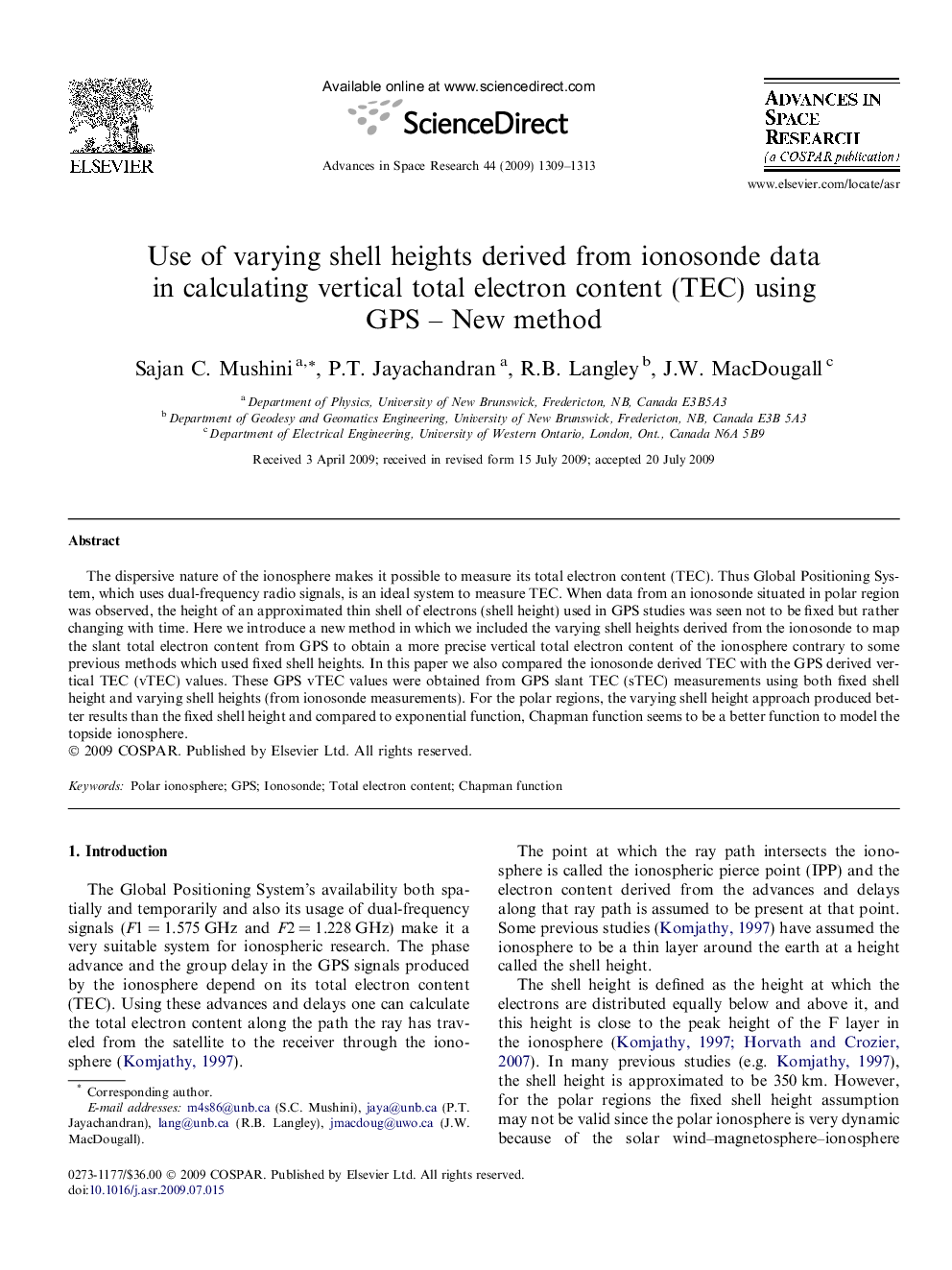| Article ID | Journal | Published Year | Pages | File Type |
|---|---|---|---|---|
| 1766466 | Advances in Space Research | 2009 | 5 Pages |
Abstract
The dispersive nature of the ionosphere makes it possible to measure its total electron content (TEC). Thus Global Positioning System, which uses dual-frequency radio signals, is an ideal system to measure TEC. When data from an ionosonde situated in polar region was observed, the height of an approximated thin shell of electrons (shell height) used in GPS studies was seen not to be fixed but rather changing with time. Here we introduce a new method in which we included the varying shell heights derived from the ionosonde to map the slant total electron content from GPS to obtain a more precise vertical total electron content of the ionosphere contrary to some previous methods which used fixed shell heights. In this paper we also compared the ionosonde derived TEC with the GPS derived vertical TEC (vTEC) values. These GPS vTEC values were obtained from GPS slant TEC (sTEC) measurements using both fixed shell height and varying shell heights (from ionosonde measurements). For the polar regions, the varying shell height approach produced better results than the fixed shell height and compared to exponential function, Chapman function seems to be a better function to model the topside ionosphere.
Related Topics
Physical Sciences and Engineering
Earth and Planetary Sciences
Space and Planetary Science
Authors
Sajan C. Mushini, P.T. Jayachandran, R.B. Langley, J.W. MacDougall,
